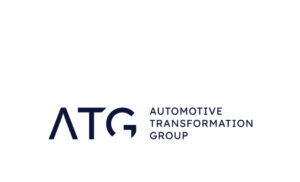AIM ISA 9th anniversary: AIM companies continue to contribute to economy

Nine years ago, on 5 August 2013, it became possible to hold AIM shares in an ISA for the first time. The UK was emerging from recession, and the then Chancellor, George Osborne, believed encouraging investment into fast-growing AIM companies would help jumpstart the economy.
What’s happened since proves him right. In 2019 AIM companies were contributing £33.5 billion to the UK economy and supporting more than 430,000 jobs. Importantly, jobs created by AIM companies are more productive with an average gross value add of £77,700 per filled job compared with the national average of £56,387.
Investors are benefitting too. Not only do they get access to over 800 investment opportunities with a total market cap of £105bn, not previously available in their ISA, they can potentially pass on their ISA free of inheritance tax to their heirs. With HRMC raking in £1.8bn in the last quarter in inheritance tax payments, this is a tax break investors should not ignore.
Alex Davies, CEO of Wealth Club, comments: “The change in ISA rules nine years ago was a real turning point for investors. Until then if you had built up a large ISA pot – whilst tax efficient in so many other ways – it was a sitting duck in terms of inheritance tax. There was no way around that: if you wanted to avoid IHT, you had to move your money out of the ISA.
This changed nine years ago, when investors were first allowed to hold AIM shares in their ISA. When you invest in qualifying AIM stocks within your ISA, they could be free of inheritance tax after just two years. Moreover, unlike other forms of inheritance tax planning you keep control of your money rather than having to give it away before you die.
There is around £620 billion held in ISAs, mostly by older investors. Now AIM ISAs aren’t for everyone, but if you are 65 plus and the value of your estate is above the inheritance tax threshold you should certainly look at AIM ISAs – whether that is making use of this year’s allowance or transferring old plans to make them IHT free.
Currently, far too few people use them or even know about them.
Of course, you need to be comfortable with the risks. If your retirement depends on your ISA, you probably should probably avoid since AIM is typically more volatile than the main market.
That said, your AIM ISA will have to underperform the main market by 40% before your heirs lose out in real terms, once you’ve taken the IHT saving into account.
But let’s be clear this isn’t a tax dodge.
The reason George Osborne changed the ISA rules so that AIM stocks could be held in your ISA in 2013 was to help get the UK out of the doldrums and growing again after the recession, And this was exactly the right thing to do. AIM packed with innovative, fast-growing companies which employ huge numbers of people in well paid and highly skilled jobs, a recipe for economic growth. Thanks to this change, billions of pounds has since poured into these companies, many of which were previously under the radar for normal investors.
With the current uncertain outlook, encouraging money to be channelled into such companies should remain a priority for the government.
Investors can either choose their own AIM stocks within their ISA or pick a ready-made portfolio managed by a professional. It is important to remember that not all AIM stocks qualify.”
What to invest in:
Popular AIM ISA stocks for inheritance tax planning include:
Fevertree Drinks – £1.2 billion market cap. Fever-tree is the world’s leading supplier of premium carbonated mixers and perhaps most recognised for its iconic tonic water blends. The business has seen revenues grow from £170.2m in FY 2017 to £311.1m in FY 2021.
CVS Group – £1.25 billion market cap. CVS Group is one of the UK’s largest veterinary businesses, with 500 surgeries across the UK, Netherlands and Republic of Ireland together with an online veterinary pharmacy and pet crematoria. The pet boom during the pandemic did wonders for the group, with revenues up around 25% between 2019 and 2021, reaching £510.1 million.
GB Group – £1.3 billion market cap. Verification, anti-money laundering and anti-fraud service GB Group is a key provider to an ever-growing range of clients – from banks to online casinos. Regular transactions and business critical services allow it to earn a healthy 25% margin from sticky customers – while market growth and acquisitions provide a pathway to future expansion.
Popular AIM ISA portfolios
RC Brown AIM ISA – No initial charge until 26 August, and 1.25% AMC plus VAT. RC Brown is a boutique investment management business with £330 million of assets under management, of which £32.1 million is held within the AIM IHT service. It looks to invest in new share issues of companies seeking capital for expansion. This means some of the companies in the portfolio are quite small. That said, 60% of the portfolio is invested in businesses valued at less than £250 million and the average market cap for companies in the portfolio is £447.5 million.
Stellar AIM IHT ISA – No initial charge until 26 August and 1.5% AMC plus VAT. The investment team will invest approximately two-thirds of the portfolio into companies it considers to be offering “growth at a reasonable price”, and a third will be invested into “Value” or “Special Situation” opportunities, such as companies undergoing a turnaround. The team believes these stocks will complement the wider portfolio and add diversification. 59.3% of the portfolio is invested in businesses with market capitalisations of under £250 million. The average market cap of investments within the service is £342 million.
Octopus AIM ISA – 0.75% initial charge and 2% AMC plus VAT. This is the largest AIM IHT portfolio, run by one of the most experienced AIM managers. It launched in 2005 so it has a track record of navigating a recession. The average market cap for companies in the portfolio is over £734 million.





